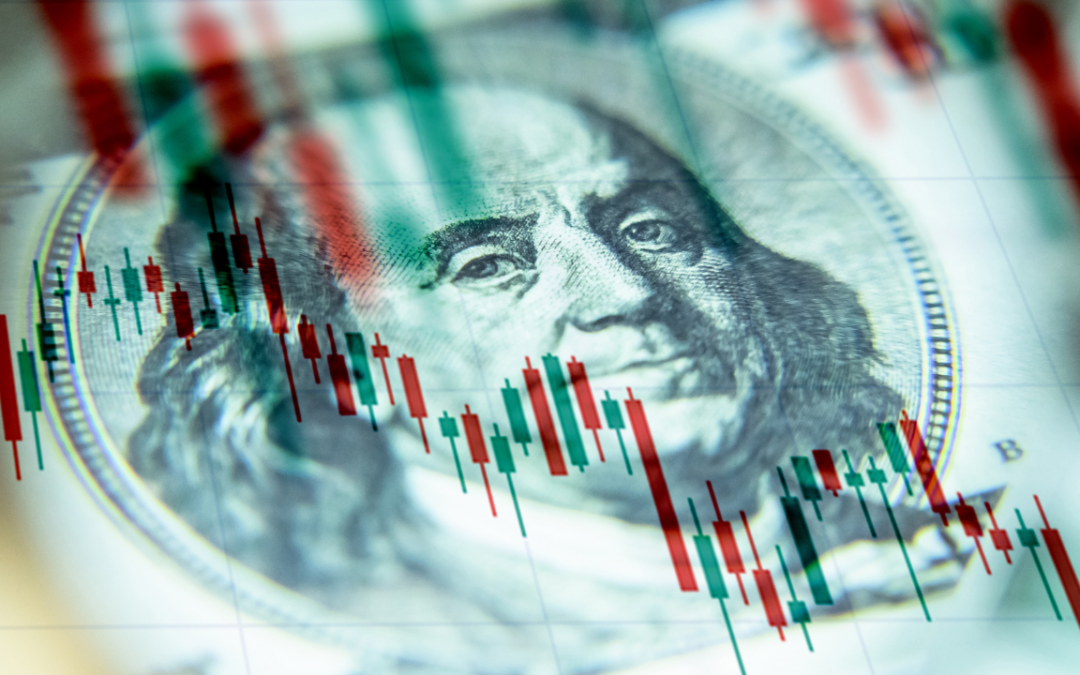It’s all priced in.
That may sound corny, but today’s digitally-driven public markets discover price fairly quickly. Before the pandemic, U.S. stock investors knew they had a back-stop in the Federal Reserve, which would lower interest rates if substantial threats to the economy, like the trade war with China, materialized. Indeed, interest rate expectations in early 2020 were muted, as the Fed had made clear it would keep rates low for some time, while it watched inflation hum at just below 2%.
But that was then, and this is now.
Then, interest rates had the ability to go lower. The 10-Year treasury yield was at 1.8% in the beginning of January and the federal funds rate was at 1.55%. And a substantial threat did materialize. It just wasn’t anything as benign as trade relations with China or misses on GDP expectations. It was the worst pandemic in 100 years and the Fed was indeed able to use some of the rate cuts it had in its arsenal. In the first two weeks of March the central bank cut rates twice, sending the bottom rung to 0%, and on March 23, said it would provide unlimited stimulus to keep short-term rates pinned near 0% — the proverbial Bazooka.
Stocks rebounded and the Fed began buying corporate bonds, even high-yield ones, to keep borrowing costs low. In May, corporations took advantage of the historically low rates and issued about $1 trillion of investment grade debt, greater than all of 2019’s total of about $975 billion, according to data from Canaccord Genuity. In turn, companies were able to retain many employees, one factor supporting the rebound in consumer spending. And the S&P 500 rose 57% since its March lows. Even though that gain would be far smaller without large-cap growth tech stocks, many of whom have benefited from the pandemic, the Vanguard S&P 500 Value ETF VOOV, home to many cyclical names, is up 41% since March 23. Not bad.
Today, however, monetary stimulus is unlikely to drive a second act for the stock market. The benchmark lending rate is at a touch above 0%. The 10-year Treasury yield is hovering around 0.7%. Its spread over the fed funds rate is just above 0.6 percentage points, according to data from the St. Louis Fed. Dating back to 1965, the spread has trended somewhere near 2.5%, with dips to the current territory only happening around recessions or periods of recession fears. So, if all goes according to plan for the Fed, the spread should widen, which means either the Fed funds rate has to go to negative territory — which the Fed likely wants no part of — or the 10-year Treasury yield must rise. Also, the real yield on the 10-year Treasury bond (the yield minus inflation) is negative, another indicator that the yield must rise from here.
In February and March, stocks were in a bottomless pit, with forward earnings multiples on the S&P 500 falling to below 15 times. A seismic shift in interest rates and trillions of dollars of added liquidity has brought the average multiple on the S&P 500 to about 23.5 times by the close of the market on September 1. This may sound like an incredibly stretched valuation level, but compared to interest rates it’s reasonable. Lower interest rates usually equate to higher stock valuations because the profits to companies are then discounted at lower rates, boosting the value of those profit dollars. Also, investors are more willing to take the risk of being in stocks if interest rates offer not much over inflation.
The more important metric than earnings multiples is the equity risk premium – the excess rate of return on stocks that investors demand for the excess risk they are taking by buying stocks – rather than the safe 10-year treasury bond. Or put another way, it is the earnings yield on the S&P 500 for the next 12 months (expected earnings per share divided by the index’s price level) minus the yield on the 10-year Treasury bond. The current equity risk premium on the S&P is roughly 3.56% as of September 1. Since around 1980, the average equity risk premium on the benchmark index is just a touch above 3% and the much longer-term historical average is closer to 3.5%.
The point is that stocks are pretty close to fully priced, especially considering the interest rate environment. Also, given the uncertainty around a potential new wave of coronavirus infections (rates are rising in about half of all states today), the sufficiency and speed of a new fiscal stimulus bill and a potential hike in corporate taxes under a potential Biden Administration, many investment strategists are using a higher equity risk premium (usually indicating lower stock prices) in their S&P 500 price targets.
So if rates cannot fall much from here and stock prices are, more or less, pricing in that rate environment, can Fed policy do much more for the stock market? The bulls might argue three points.
First is TINA – there is no alternative to stocks. Given the Fed will now target an average inflation rate of 2% over time, rather than a 2% limit, the economy may be allowed to run hot. And good companies are best positioned to raise prices of their goods and in turn price in inflation.
Second, value stocks trade at much cheaper valuations than growth stocks. The composition of that 3.5% risk premium reflects this, with large cap growth stocks trading expensively, bringing the average valuation on the market cap-weighted S&P 500 up and therefore the risk premium down. Keeping valuations more tolerable are value stocks, many of which trade at cheap valuations relative to rates, so maybe value still has some upside. And the lower rates in 2020 have helped the economic recovery so far, a positive for cyclical value stocks, as earnings have surprised to the upside. Rising rates from this point on would likely reflect continued firming of both economic demand and earnings momentum for cyclicals. The higher rates, or a higher discount rate, would pressure earnings multiples, but likely only partially.
A third counterargument to the position that low rates cannot lift stocks from here centers on credit spreads. The Fed intervention has clearly lowered interest rates across the bond market down on an absolute basis, but credit spreads (the difference in yield on riskier bonds like corporates over the 10-year Treasury yield) are still a smidgen wide by historical standards. Spreads have tightened since the market wreckage in March, but the high-yield spread in the U.S. remains around 5%. That compares to longer-term historical average closer to 4%. Investment grade corporate spreads in the U.S. are at around 1.3%, compared to a longer-term average of closer to 1%. As the economy continues to recover, spreads can conceivably tighten from here and corporate borrowing costs would decrease. From a discounting perspective, stock valuations would then have incrementally more support.
Net-net, while the Fed’s August policy update ‘reinforces’ some analysts positive view of U.S. stocks going forward, it does not inspire much confidence in continued upside. Put simply, low interest rates are mostly priced into stocks.



